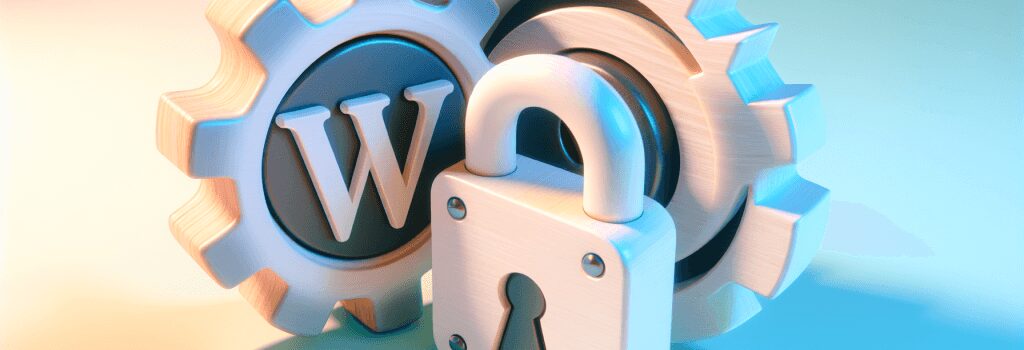WordPress Maintenance: Keeping Your Site Updated and Secure

Greetings, budding web developers! Today, let’s dive into the world of WordPress, where elegance meets simplicity. Whether you are a grandmaster web ninja or a newbie just starting to dip your feet into the daunting sea of coding, WordPress is the go-to platform that completes your web development journey with a cherry on top. But hey, having a WordPress site is not just about creating it – it’s about maintaining it too! So roll up your sleeves, as we go on a fun and enlightening journey titled, ‘WordPress Maintenance: Keeping Your Site Updated and Secure’.
Let’s Kick-start with the Basics
But, first, a little joke to lighten the mood. Why don’t programmers like nature? It has too many bugs. But guess what? Your WordPress site might have them too if not maintained well!WordPress Maintenance: Why is it Important?
Maintaining your WordPress site is like taking care of a pet (minus the fur!). Just like your cute little pupper needs food, exercise, and regular doctor visits, your WordPress site needs to be updated, backed up and checked for security threats regularly.Neglecting WordPress maintenance can attract unwanted ‘guests’ (we mean hackers here!) and make your site prone to security threats. So, to have a smooth sailing website that functions as well as it looks, regular maintenance is non-negotiable.
The Three Commandments of WordPress Maintenance
Ready to rescue your WordPress site from the scary world of digital threats? Here are three key steps to guide you through effective WordPress maintenance:Update, Update, Update!
Just like your smartphone, your WordPress site needs its routine updates. These updates introduce new features, fix existing bugs, and offer security patches, making your site safer and more efficient. So, don’t avoid those notifications about pending updates – they are akin to spinach for the Popeye that is your WordPress site.Backup or Sob Later.
As coders, we know the utter heartbreak of losing hours of hard work because we forgot the commandment of ‘Ctrl+S’. The same goes for your WordPress site. Regularly backup your website content to save your hard work from unexpected glitches or cyber threats because unlike in videogames, there’s no respawning here, folks!Security: Better Safe than Sorry!
With great power (read: a WordPress website) comes great responsibility. Secure your website from cyberattacks or malware by using WordPress security plugins and implementing regular security checks. After all, you don’t want strangers breaking into your house, do you?So, there you have it: the hero’s guide on how to maintain your WordPress site. Remember, it’s not just about the birth of a site but its journey thereafter. Till next time, keep coding, keep exploring, and remember – ducks type faster than rabbits. Or was it the other way around?
FAQ
How often should I update my WordPress site?
It’s essential to update your WordPress site regularly, ideally whenever new updates are available. Updates often include security patches and bug fixes that help keep your site safe.
Can I update WordPress plugins and themes manually?
Yes, you can update plugins and themes manually through the WordPress dashboard. Just make sure to back up your site before making any changes.
Why is it important to keep plugins and themes updated?
Keeping plugins and themes updated is crucial for the security and functionality of your site. Outdated plugins can be vulnerable to security breaches, affecting your site’s performance.
How can I ensure my WordPress site remains secure?
Besides updating plugins and themes, you should also use strong passwords, limit login attempts, and install security plugins like Wordfence or Sucuri to enhance your site’s security.
What should I do if my WordPress site gets hacked?
If your site is hacked, immediately contact your web hosting provider and follow their instructions. You may need to restore a backup of your site and strengthen security measures to prevent future attacks.
Are there tools available for automated WordPress updates?
Yes, you can use plugins like Easy Updates Manager or WP Auto Update to automate the update process for WordPress core, themes, and plugins.
How can I test updates before applying them to my live site?
Consider setting up a staging environment to test updates before applying them to your live site. This allows you to identify any potential issues without impacting your site’s performance.
What should I do if an update breaks my site?
If an update causes issues on your site, you can roll back to a previous version by using a backup or contacting plugin/theme developers for assistance.
Is there a recommended backup frequency for WordPress sites?
It’s advisable to back up your WordPress site regularly, with weekly backups being a common practice. However, the frequency may vary depending on how frequently you update your site.
How can I stay informed about WordPress security vulnerabilities?
Subscribe to security mailing lists like WPScan Vulnerability Database or follow WordPress news websites to stay up-to-date on security vulnerabilities and best practices for WordPress maintenance.


